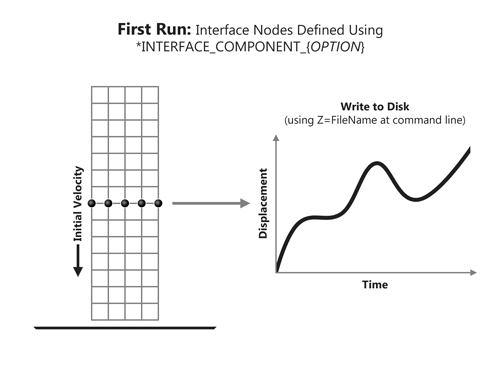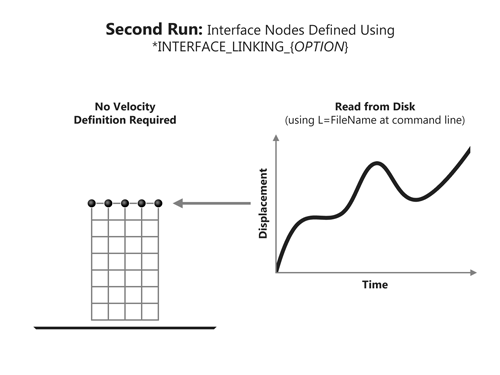Interface component analysis is a unique feature that helps to speed design variation studies for non-structural components using a model fragment of the full system model. It works by first storing the displacement time history of user-defined nodes to a disk on a file system. The stored file is a binary file and its name must be specified using the z option on the command line execution. Once the file is stored, users can use it in their subsystem models to study design variations by reading the stored time-history data and linking this to the list of user-defined nodes in the subsystem that are within the neighborhood of the original nodal coordinates.
The following figures graphically depict this process:
Notes:
1. The IDs of the node list in the subsystem model can be completely arbitrary.
2. Internally, LS-DYNA stores the time-history data on a per node basis
3. It is important to limit the changes in the subsystem to non-structural components
















